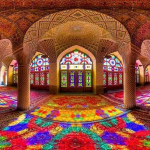When you travel to North Korea and stay at the iconic Yanggakdo International Hotel, look down from the upper floors and you’ll spot a uniquely shaped building that resembles a giant waterwheel – that’s the Yanggakdo International Cinema.
Table of Contents
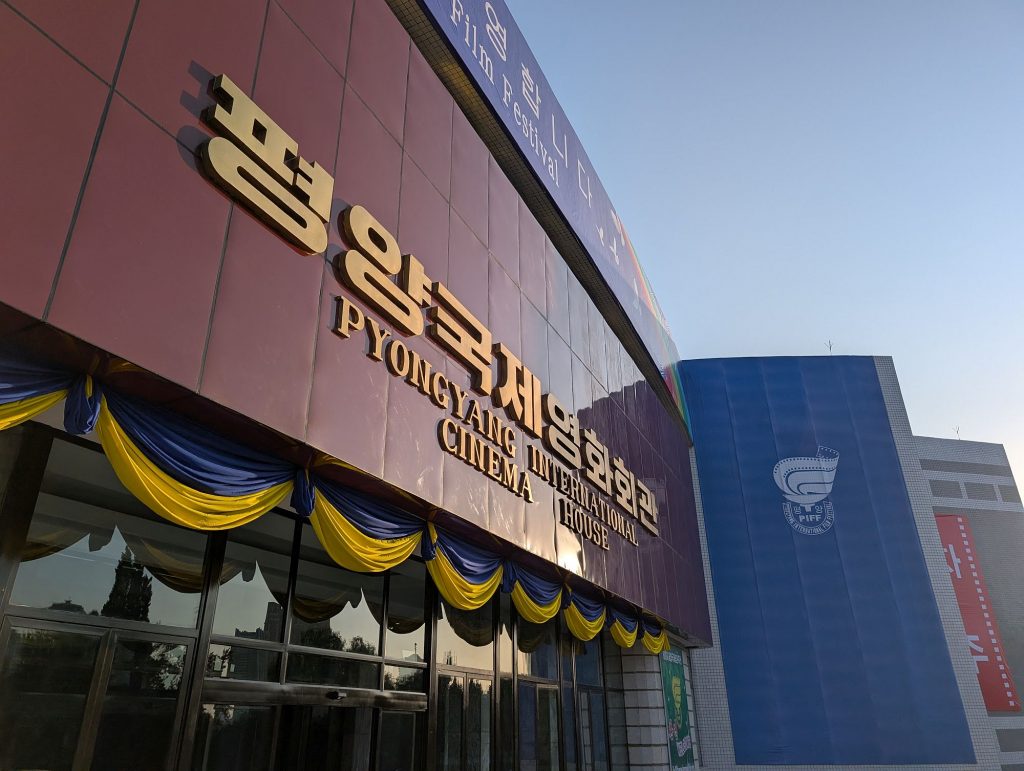
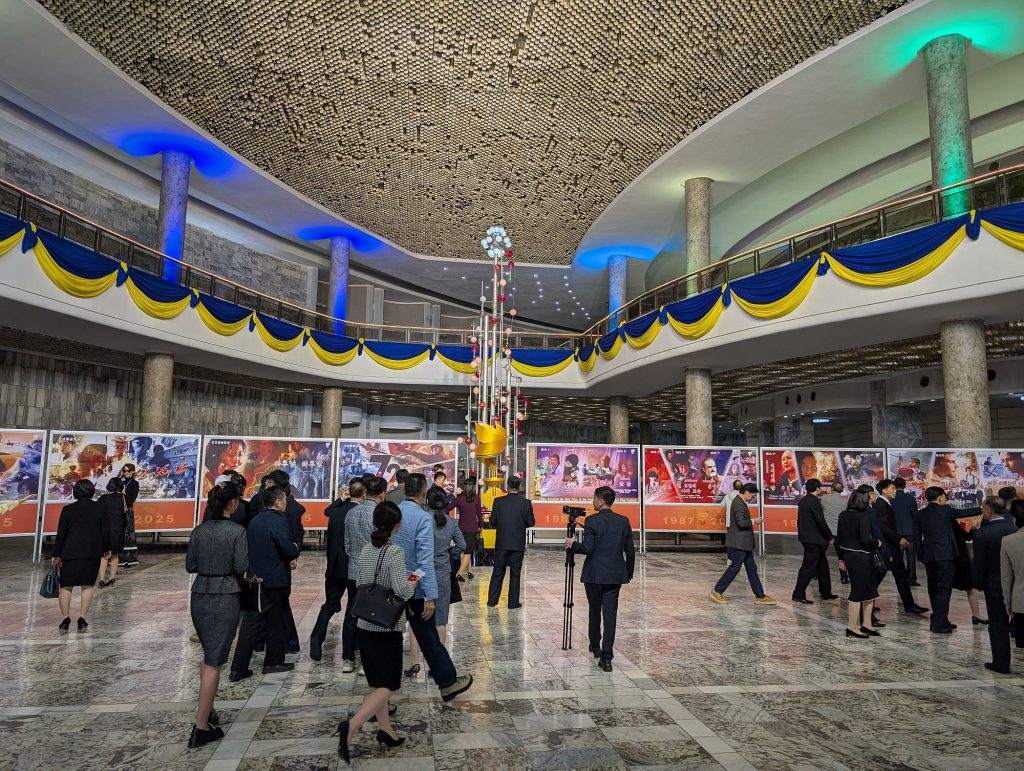
Name of the Yanggakdo International Cinema
In fact, the official name of the this Cinema is actually the Pyongyang International Cinema. It’s called the Yanggakdo International Cinema simply because it sits on Yanggak Island, right next to the well-known Yanggakdo International Hotel, and forms part of the island’s group of buildings.
Background and History of the Yanggakdo International Cinema
The Yanggakdo International Cinema was built between 1988 and 1989, alongside the East Pyongyang Grand Theatre and the Central Youth Hall, in preparation for the 13th World Festival of Youth and Students held from 1st to 8th July 1989.
Its construction was carried out under the guidance of North Korea’s top leaders. On 18 May 1989, Kim Il Sung inspected the centre and declared its completion, while Kim Jong Il oversaw its management and operations. The cinema was established with the aim of “promoting film exchange with other countries and contributing to the people’s ideological education and cultural life.”
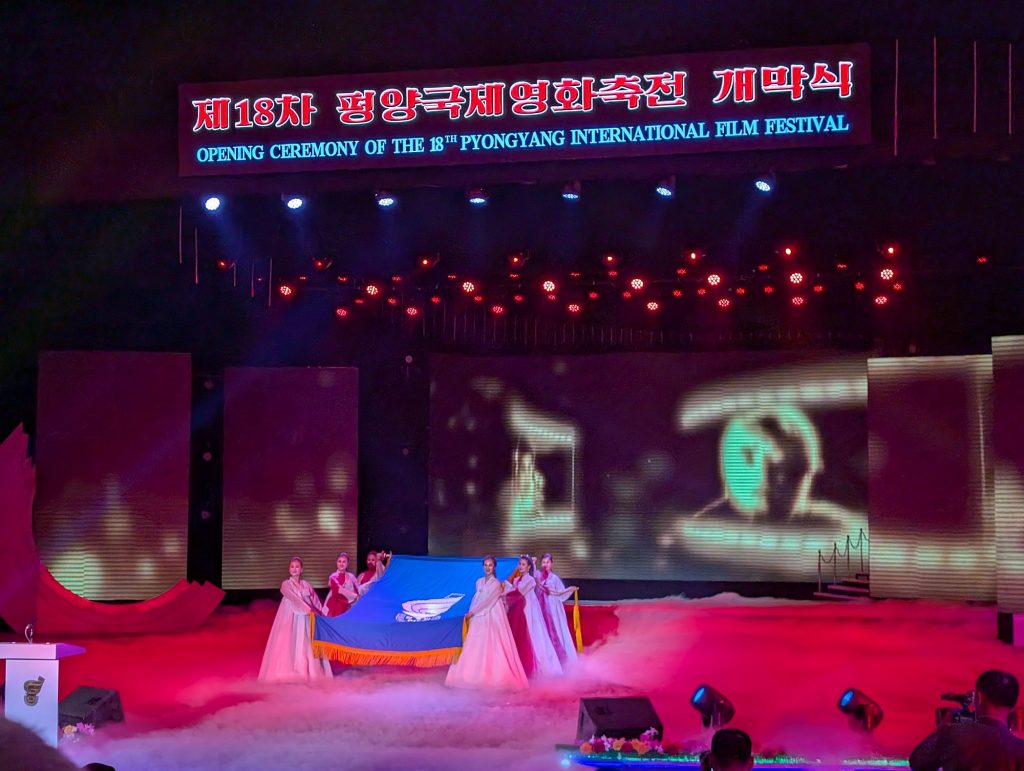
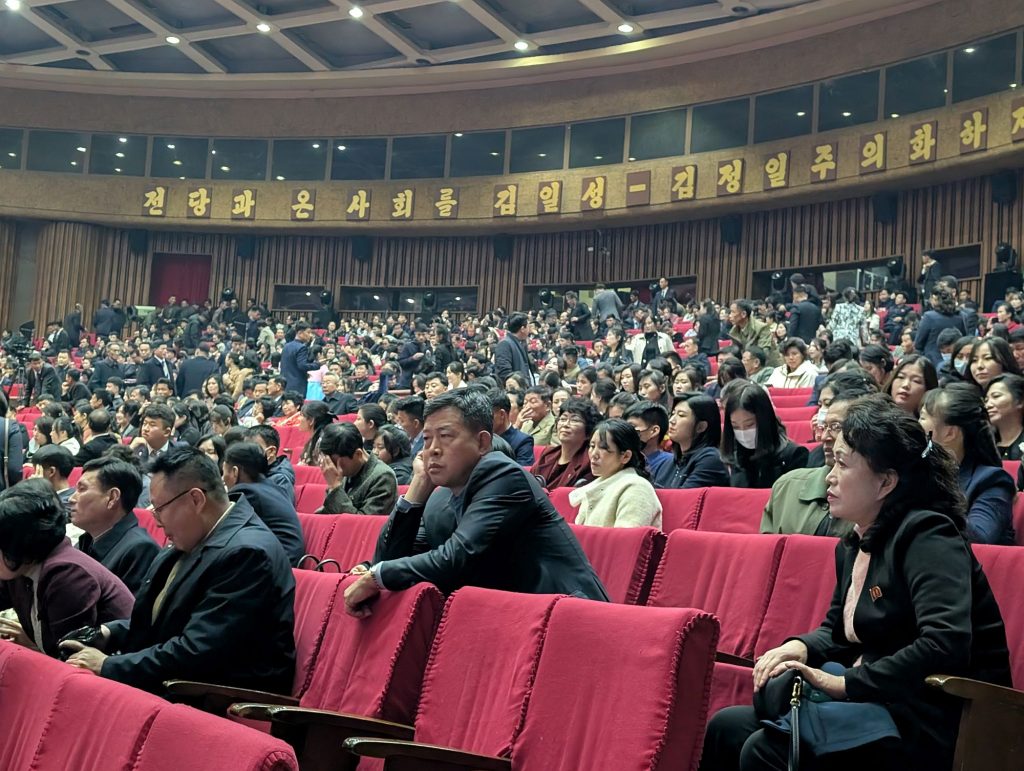
Architecture of the Yanggakdo International Cinema
North Korean architecture is known for its distinctive style, and the Yanggakdo International Cinema is no exception. Its design harmonises with both the Yanggakdo International Hotel above and the football stadium below, while still standing out in sharp contrast. The building’s floor plan is dynamic, shaped like a rotating 17-blade waterwheel. The main entrance runs parallel to the flow of the Taedong River, creating a striking visual perspective from the riverside.
Some also believe the building’s form symbolises a reel of film running through a projector. In 2018, the exposed concrete exterior was covered with grey and white tiles, giving it the appearance of 35mm film.
Interior and Facilities of the Yanggakdo International Cinema
The Yanggakdo International Cinema covers a site area of 120,000 square metres, with a total floor area of 60,000 square metres and a building footprint of 42,000 square metres. The complex houses six screening halls: on the first floor, there is a 2,000-seat circular theatre, a 600-seat serrated-shaped hall, and a 300-seat oval hall; on the second floor, there is a 100-seat hexagonal hall and two 50-seat square halls.
The 2,000-seat circular theatre is equipped with a horizontally movable stage, automatically adjustable orchestra seating, modern lighting, simultaneous interpretation systems, rehearsal rooms, and dressing rooms. It serves as an ideal venue for plays, music and dance performances, and even operas.
One of the main highlights of the Cinema is its extensive range of facilities, making it well-suited for hosting international film festivals. In addition to the six theatres, the complex includes more than 600 offices and auxiliary rooms, providing workspaces for film festival committees and juries, as well as restaurants and other supporting facilities. It also features a central hall, conference rooms, lounges, recording and projection studios, translation and broadcasting rooms, international telephone and computer rooms, film recording and transmission studios, a television broadcasting room, and a film archive – all of which can be used during international film events.
Beyond film screenings, the cinema regularly hosts stage performances by film artists, serving as both a cultural hub for local residents and a comprehensive base for film distribution.
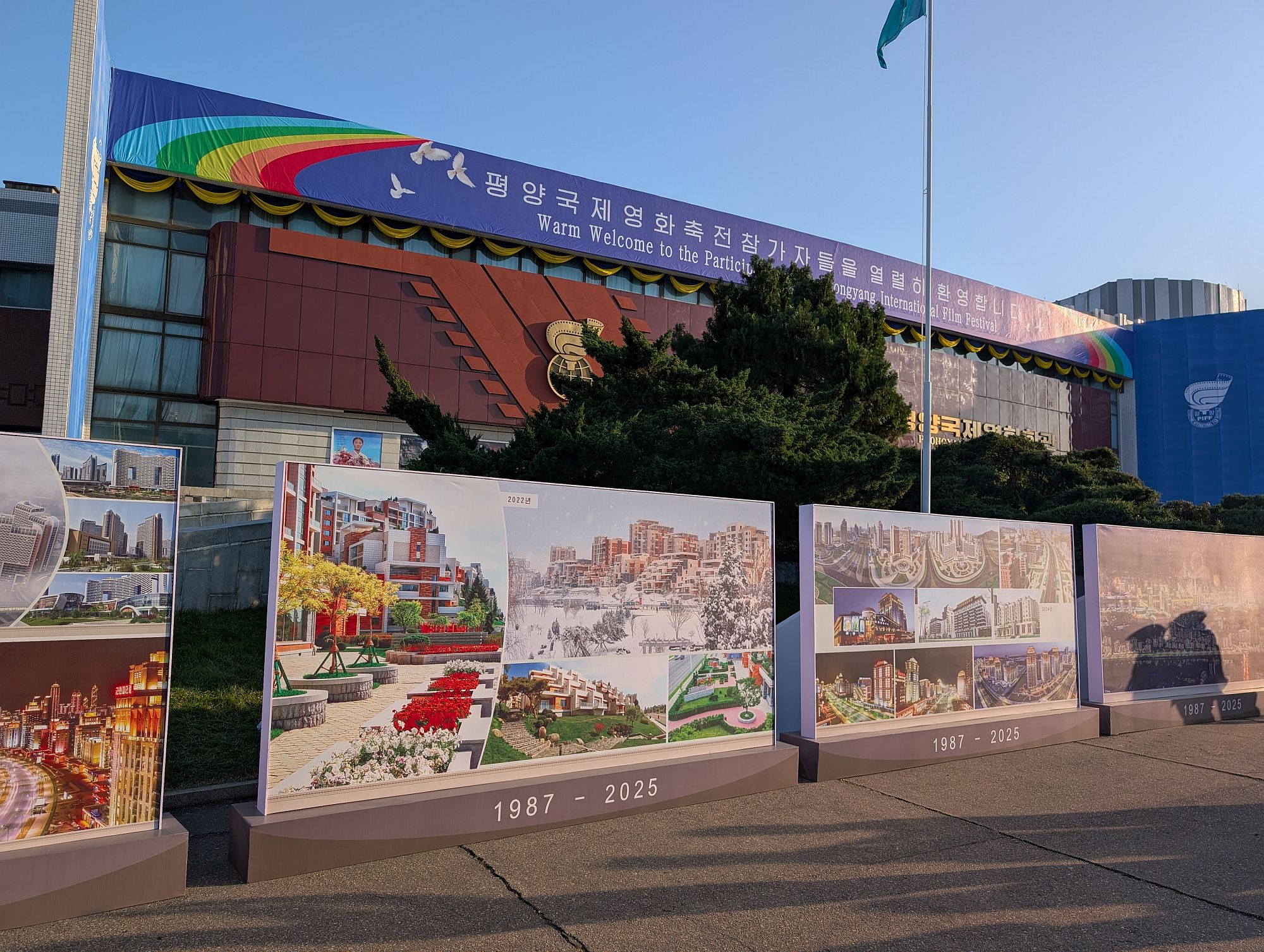
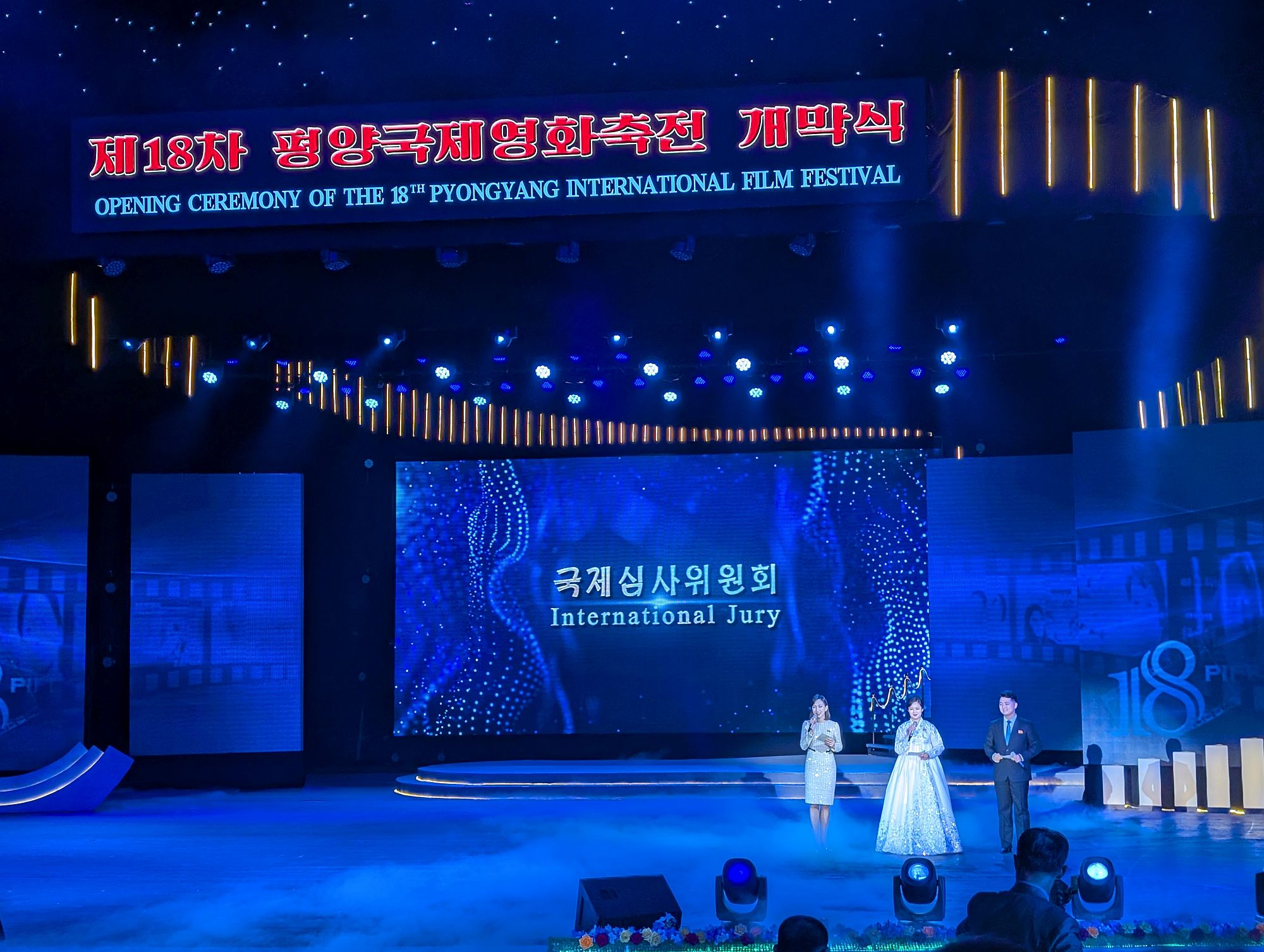
Yanggakdo International Cinema and the Pyongyang International Film Festival
In September 1987, a year before construction of the Pyongyang International Cinema began, North Korea held its first international film event – the Pyongyang Film Festival of Non-Aligned and Other Developing Countries. Three years later, the festival was revived as the Pyongyang International Film Festival, held every two years, with the newly completed Pyongyang International Cinema chosen as its main venue.
Many landmark screenings in North Korean film history have taken place at the Yanggakdo International Cinema. In 2006, the Swedish film Frostbiten became the first horror movie ever shown in North Korea. The following year, A Schoolgirl’s Diary was acquired for international distribution by a French company, becoming the first North Korean film in decades to be released abroad.
In 2003, Arirang, directed by South Korean filmmaker Lee Doo-yong, was screened here as well, marking the first film to be shown in both North and South Korea.
Visit the Yanggakdo International Cinema in 2025
In October 2025, the 18th Pyongyang International Film Festival returned after a five-year pause. As the official agent of PIFF, the YPT delegation was once again invited to visit Pyongyang. YPT returned to the Yanggakdo International Cinema to take part in the entire festival from the opening ceremony and film screenings to the closing event.
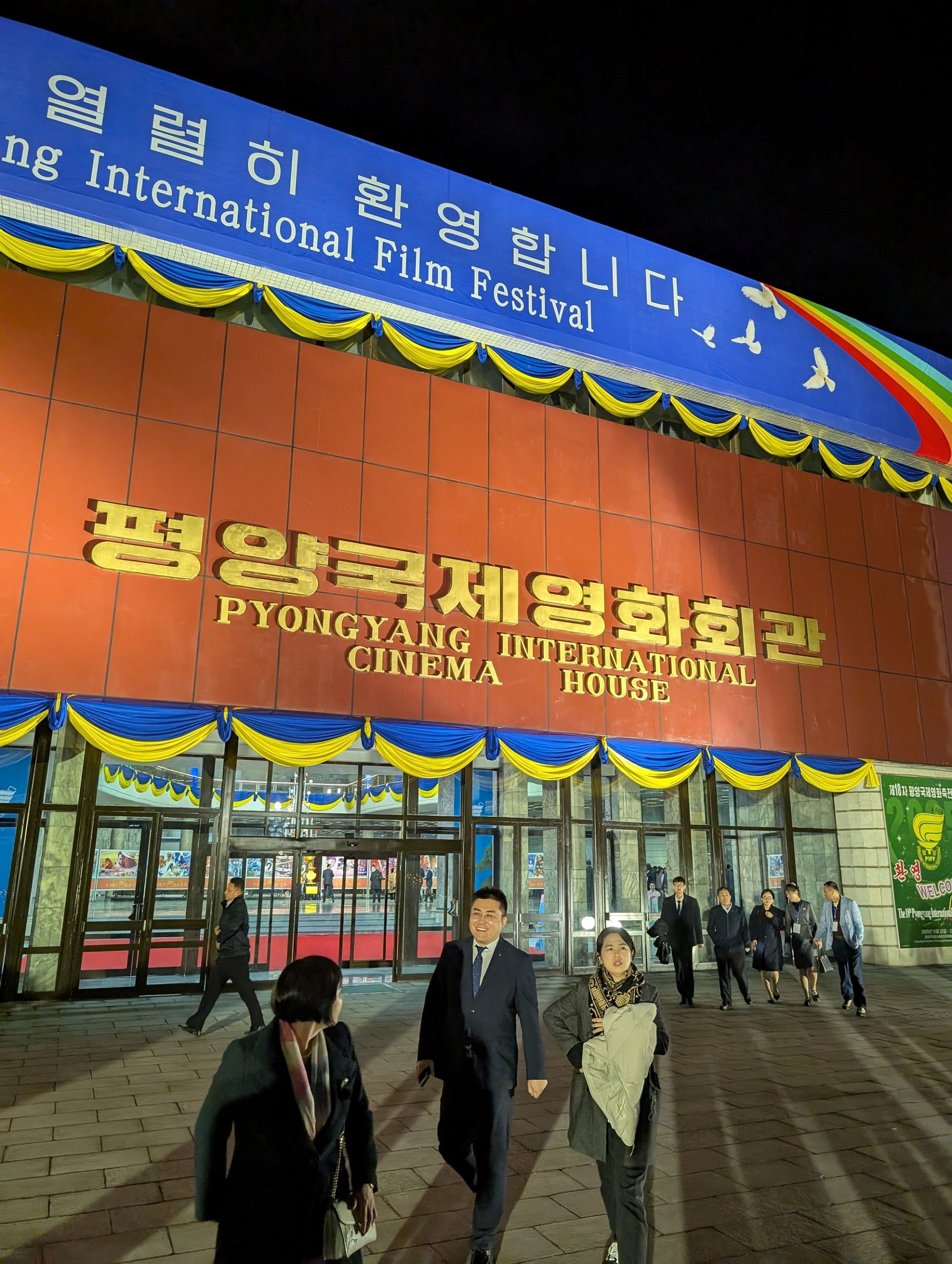
Conclusion
The Yanggakdo International Cinema serves as the venue for the Pyongyang International Film Festival and remains one of North Korea’s key cultural bridges to the outside world. As the official PIFF agent, YPT regularly organises Pyongyang International Film Festival tours.





